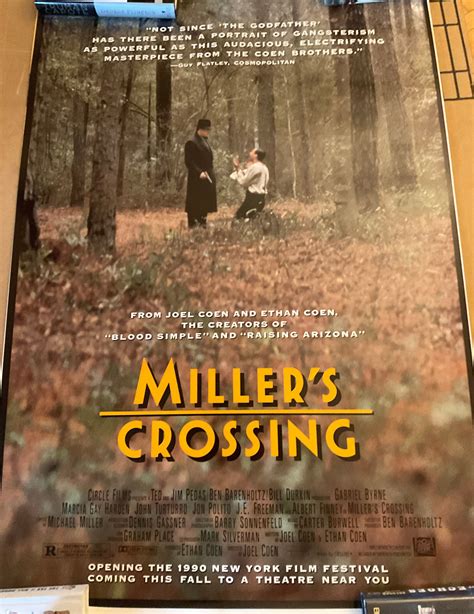Miller's Crossing

Description:
Miller's Crossing is a 1990 American neo-noir gangster film that follows the story of a mob advisor who finds himself caught in a war between two rival gang leaders. As he navigates through betrayal and deception, he must make difficult decisions that will ultimately determine his fate.Keywords:
Betrayal, Loyalty, Gangster, Manipulation, AmbiguityWhat is the point of Miller's crossing?
In "Miller's Crossing," the titular location serves as a pivotal point in the film, symbolizing moral ambiguity and the struggle for power within the world of organized crime. It represents a crossroads where characters face difficult choices, testing their loyalties and ethics. The protagonist, Tom Reagan, navigates the treacherous landscape of betrayal and deception, ultimately reflecting on themes of fate and free will. The crossing is a metaphor for the complex decisions that define the characters' lives and their fates in a violent, unforgiving environment.
Is Miller's Crossing streaming anywhere?
As of October 2023, "Miller's Crossing" is available for streaming on platforms like HBO Max and Amazon Prime Video, where you can rent or purchase it. Availability may vary based on your region, so it's a good idea to check your local streaming services or use a service like JustWatch to find where it's currently offered.
Is Miller's Crossing worth watching?
"Miller's Crossing," directed by the Coen Brothers, is widely regarded as a classic neo-noir film. Set during the Prohibition era, it explores themes of loyalty, betrayal, and moral ambiguity within the world of organized crime. The film features strong performances, particularly by Gabriel Byrne and John Turturro, and is noted for its sharp dialogue and stylish cinematography. Its intricate plot and rich character development have earned it critical acclaim. If you appreciate thought-provoking stories and Coen Brothers' unique cinematic style, it's definitely worth watching.
Where was Miller's Crossing filmed?
"Miller's Crossing," directed by the Coen Brothers, was primarily filmed in and around New Orleans, Louisiana. The city provided a backdrop that matched the film's 1920s Prohibition-era setting, with its unique architecture and atmospheric streets. Some specific locations included the French Quarter and various historic buildings, which contributed to the film's distinctive visual style. The choice of New Orleans added to the film's noir aesthetic, blending the city's rich history with the story's themes of loyalty and betrayal.
Explore More Categories: